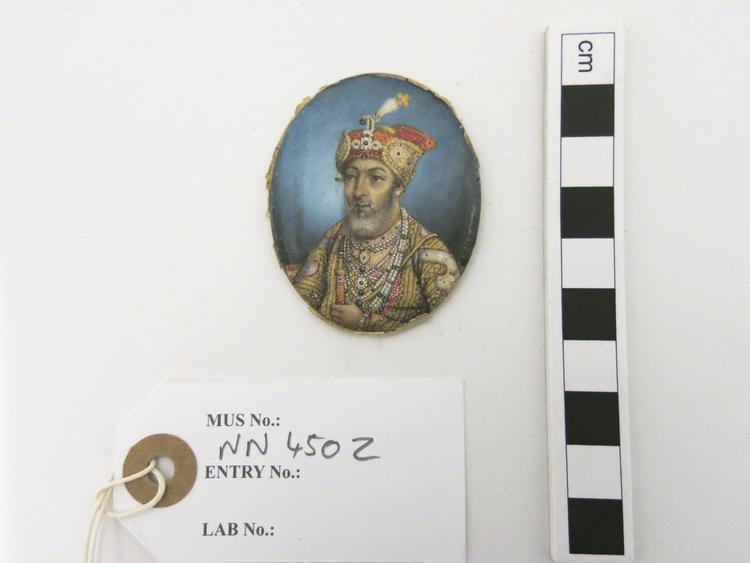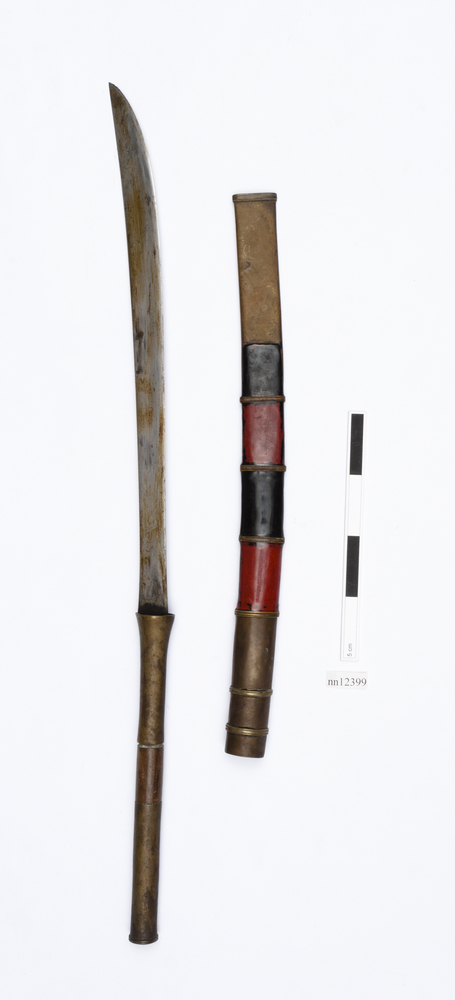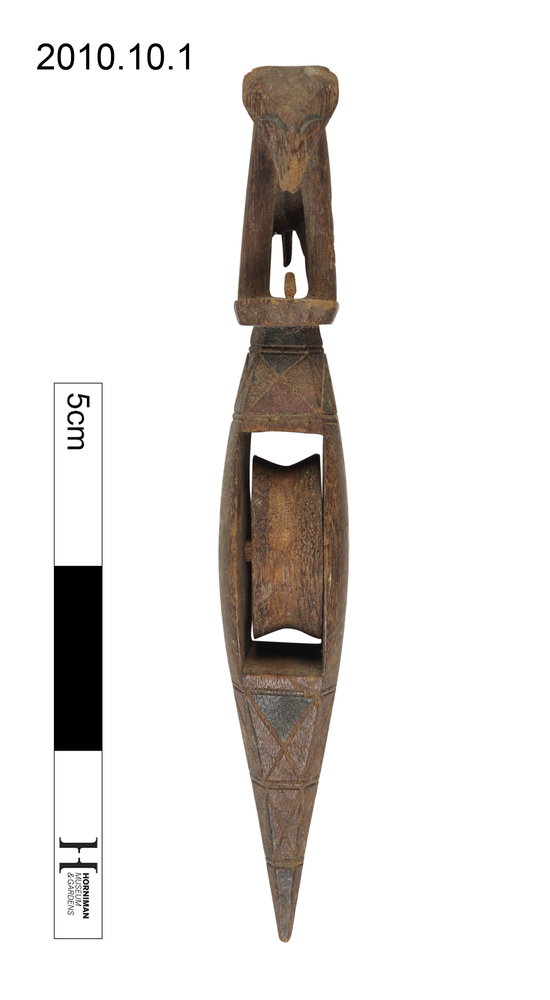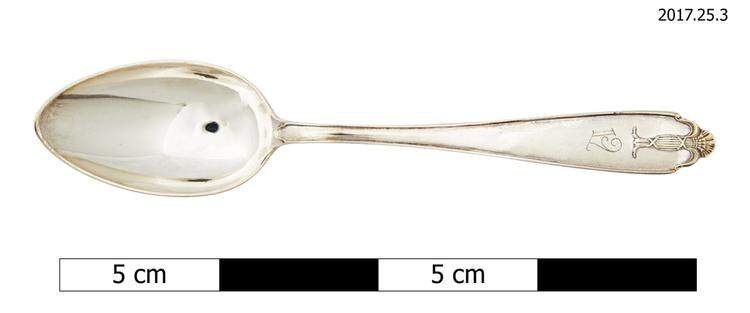
Miniature bust portrait of Emperor Bahadur Shah II (1775-1862), the last Moghul emperor of India, in his heavy royal regalia. He is seated against a bolster holding the mouthpiece of a huqqa pipe. Gouache, possibly heightened with gold, on ivory.
A bust portrait depicting the last Mughal emperor of India in his heavy royal regalia. His father was Akbar Shah II and his mother was from a Rajput family, Lal Bai. He became emperor in 1837 after his father’s death but his empire did not extend beyond the walls of the Red Fort of Delhi. He was a renowned Urdu poet and was a patron of many famous poets. As a devout Sufi who believed that Hindus and Muslims were equal, he was regarded as the figurehead of the Sepoy Mutiny against British rule in 1857-58. He was eventually captured and exiled to Rangoon in Burma. It is said that he was denied paper and pen in captivity so he wrote on the walls of his room with a burnt stick. 'Company paintings' were produced by Indian artists for Europeans living and working in the Indian subcontinent, especially British employees of the East India Company. They represent a fusion of traditional Indian artistic styles with conventions and technical features borrowed from western art. Some Company paintings were specially commissioned, while others were virtually mass-produced and could be purchased in bazaars.


































































































































































































































































































































































































































































































































